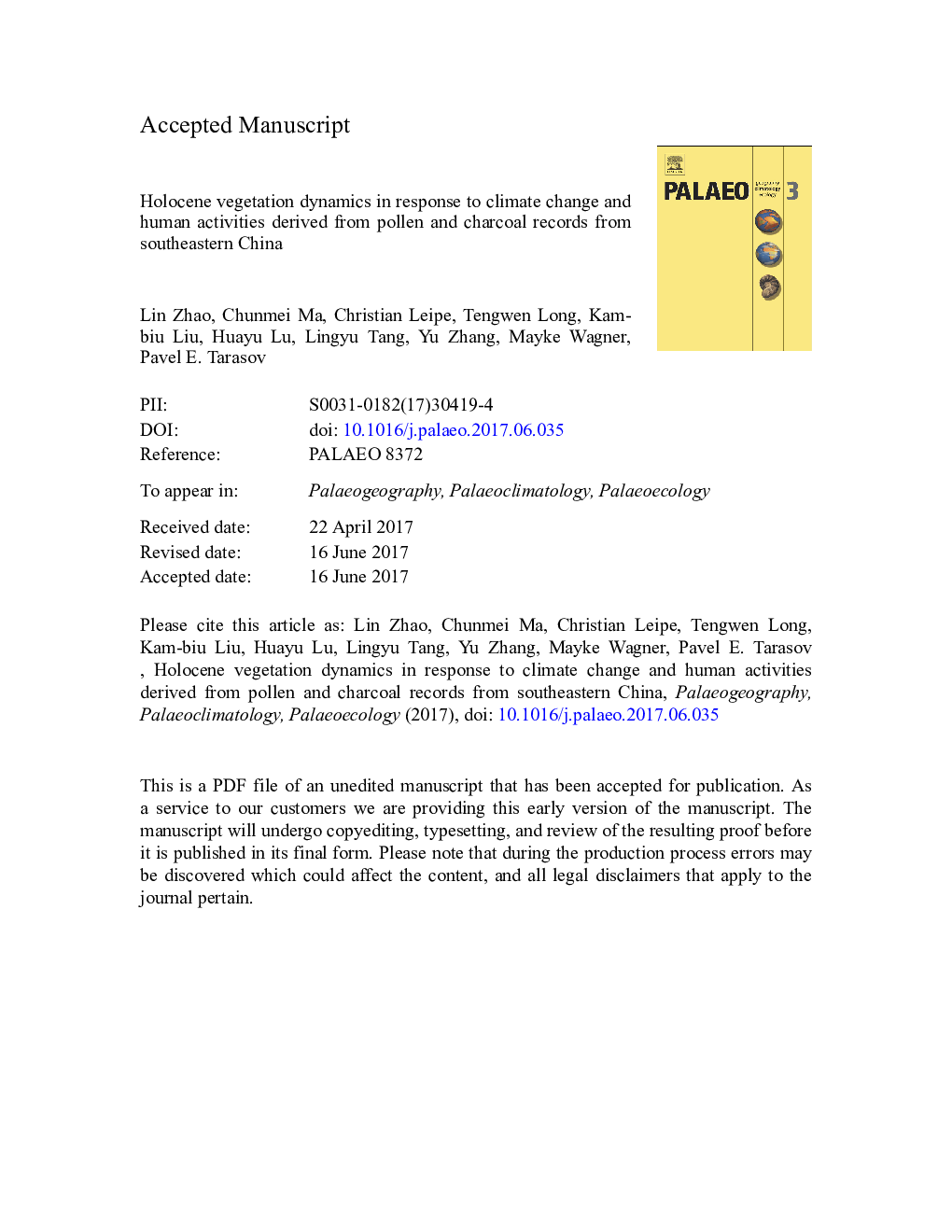| Article ID | Journal | Published Year | Pages | File Type |
|---|---|---|---|---|
| 8868702 | Palaeogeography, Palaeoclimatology, Palaeoecology | 2017 | 49 Pages |
Abstract
Our knowledge about the Holocene evolution of the East Asian summer monsoon (EASM) and its relation to human activities remains incomplete. A detailed palynological investigation of two sediment sections from the Daiyun Mountain Nature Reserve (ca. 25°38â²-25°44â²N, 118°05â²-118°21â²E, Fujian Province) suggests EASM-controlled subtropical climate conditions that were wetter and warmer than present over the early and middle Holocene. After 5700 cal. yr BP, steadily increasing non-arboreal pollen and fern spore percentages imply an attenuation of the EASM. The general climate trend is interrupted by several century-scale changes in composition and concentration of arboreal pollen taxa around 8200, 7200, 6300, and 4400 cal. yr BP, coinciding with weaker precipitation (and lower temperature) as suggested by the EASM oxygen isotope record. Our results further support the hypothesis that the natural vegetation cover of southern China was not markedly affected by human activities until 3000 cal. yr BP. The pollen records suggest a quick decrease in the forest cover ca. 3000-2450 cal. yr BP followed by a generally open (agricultural) landscape and spread of secondary pine forests. This pattern is in line with a major population growth promoted by the southward expansion of rice-based agriculture across the region that postdates the widely accepted 'Holocene climate optimum' by several millennia. This highlights the multidimensional significance of this term, which is commonly used in palaeoenvironmental and archaeological studies and should be consequently applied with respect to the specific issue under consideration.
Related Topics
Physical Sciences and Engineering
Earth and Planetary Sciences
Earth-Surface Processes
Authors
Lin Zhao, Chunmei Ma, Christian Leipe, Tengwen Long, Kam-biu Liu, Huayu Lu, Lingyu Tang, Yu Zhang, Mayke Wagner, Pavel E. Tarasov,
